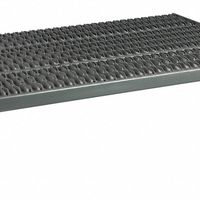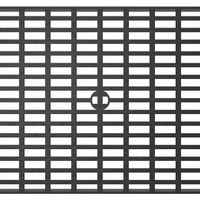Call +(254) 703 030 000 / 751 483 999 / 721 704 777
- Home
- Material Handling
- Ladders Platforms Personnel Lifts
- Work Platforms
.....Read More
Frequently Asked Questions
What are the benefits of using work platforms?
Work platforms offer numerous benefits that enhance productivity, collaboration, and efficiency in various professional settings. Firstly, they centralize communication by providing a unified space for team interactions, reducing the need for scattered emails and messages. This streamlining of communication helps in maintaining clarity and ensuring that all team members are on the same page.
Secondly, work platforms facilitate project management by offering tools for task assignment, progress tracking, and deadline management. This ensures that projects are completed on time and resources are optimally utilized. The visibility of tasks and timelines helps in prioritizing work and managing workloads effectively.
Thirdly, these platforms often integrate with other tools and software, allowing seamless data sharing and reducing the need for manual data entry. This integration capability enhances workflow efficiency and minimizes errors.
Additionally, work platforms support remote work by providing access to necessary resources and tools from any location. This flexibility is crucial in today’s globalized work environment, enabling teams to collaborate across different time zones and geographical locations.
Moreover, work platforms often include features for document management, allowing for easy storage, retrieval, and sharing of files. This ensures that important documents are accessible to all relevant team members and reduces the risk of data loss.
Security is another significant benefit, as work platforms typically offer robust security measures to protect sensitive information. This is essential for maintaining confidentiality and compliance with data protection regulations.
Finally, work platforms can enhance employee engagement and satisfaction by providing tools for feedback, recognition, and professional development. This can lead to improved morale and reduced turnover rates.
In summary, work platforms offer a comprehensive suite of tools that improve communication, project management, integration, remote work capabilities, document management, security, and employee engagement, ultimately leading to enhanced organizational performance.
How do work platforms reduce the risk of back injuries and fatigue?
Work platforms reduce the risk of back injuries and fatigue by providing ergonomic support and optimizing the working environment. They allow workers to maintain a neutral posture, minimizing the need for bending, stretching, or twisting, which are common causes of back strain. By elevating workers to the appropriate height, platforms ensure that tasks can be performed at waist level, reducing the need for awkward postures that can lead to musculoskeletal disorders.
Additionally, work platforms often come with features such as anti-fatigue mats, which help reduce the stress on the legs and lower back by providing cushioning and promoting subtle movements that improve circulation. This is crucial for tasks that require standing for extended periods, as it helps prevent fatigue and discomfort.
Platforms can also be adjusted to accommodate different tasks and worker heights, ensuring that each individual can work comfortably and efficiently. This adaptability reduces the risk of repetitive strain injuries by allowing workers to change positions and distribute physical stress more evenly across the body.
Furthermore, work platforms often include safety features such as guardrails and non-slip surfaces, which prevent accidents and reduce the risk of sudden movements that could lead to back injuries. By creating a stable and secure working environment, platforms help workers focus on their tasks without the added concern of maintaining balance or avoiding slips.
Overall, by promoting ergonomic practices and providing a safe, adaptable working environment, work platforms play a crucial role in minimizing the risk of back injuries and fatigue, leading to improved worker health and productivity.
What are the differences between single-step and multi-step work platforms?
Single-step work platforms are simple, compact structures designed to provide a small elevation, typically one step, to help users reach slightly higher areas. They are often lightweight, portable, and easy to set up, making them ideal for tasks that require minimal elevation, such as reaching shelves or performing maintenance on low-height equipment. These platforms are generally used in environments where space is limited and tasks are quick and straightforward.
Multi-step work platforms, on the other hand, are more complex and versatile. They consist of multiple steps or levels, allowing users to reach greater heights safely. These platforms are often equipped with handrails, guardrails, and non-slip surfaces to enhance safety and stability. Multi-step platforms are suitable for tasks that require extended reach or involve working at various heights, such as construction, painting, or industrial maintenance. They are typically more robust and may include features like adjustable heights, wheels for mobility, and larger work surfaces.
The primary differences between the two types of platforms lie in their design, functionality, and application. Single-step platforms are best for quick, low-height tasks, offering simplicity and ease of use. Multi-step platforms provide greater height access and safety features, making them suitable for more demanding and prolonged tasks. The choice between the two depends on the specific requirements of the task, the working environment, and the need for mobility and safety.
How do stackable work platforms work?
Stackable work platforms are modular systems designed to provide elevated work surfaces for various tasks, enhancing safety and accessibility. They consist of individual platform units that can be stacked vertically or arranged horizontally to create a customized work area. Each unit typically includes a sturdy base, a non-slip surface, and secure locking mechanisms to ensure stability when stacked.
The platforms are constructed from durable materials like steel or aluminum, ensuring they can support significant weight and withstand harsh working conditions. The design often incorporates features such as guardrails, toe boards, and handrails to enhance worker safety and prevent falls.
To assemble a stackable work platform, users start by placing the base unit on a stable surface. Additional units are then stacked on top, aligning the locking mechanisms to secure them in place. The modular nature allows for easy adjustment of height and configuration, accommodating different work environments and tasks.
These platforms are commonly used in industries such as construction, manufacturing, and maintenance, where workers need to access elevated areas safely. They offer flexibility, as they can be easily disassembled and transported to different job sites. Additionally, their stackable design minimizes storage space when not in use.
Overall, stackable work platforms provide a versatile and safe solution for accessing elevated work areas, combining ease of use with robust construction to meet the demands of various industrial applications.
What materials are work platforms typically made from?
Work platforms are typically constructed from a variety of materials, each chosen for specific properties that suit different applications and environments. Common materials include:
1. **Aluminum**: Known for its lightweight and corrosion-resistant properties, aluminum is often used in portable work platforms and scaffolding. Its strength-to-weight ratio makes it ideal for applications where mobility and ease of assembly are important.
2. **Steel**: Steel is favored for its strength and durability. It is commonly used in heavy-duty work platforms, especially in industrial settings where the platform must support significant weight. Galvanized steel is often used to enhance corrosion resistance.
3. **Fiberglass**: This material is non-conductive, making it suitable for electrical work environments. Fiberglass platforms are also resistant to corrosion and can withstand harsh weather conditions, making them ideal for outdoor use.
4. **Wood**: While less common in industrial settings, wood is sometimes used in temporary or custom-built platforms. It is easy to work with and can be a cost-effective solution for short-term projects.
5. **Composite Materials**: These are engineered materials made from two or more constituent materials with different physical or chemical properties. Composites can offer a balance of strength, weight, and resistance to environmental factors.
6. **Plastic**: High-density polyethylene (HDPE) and other durable plastics are used for lightweight, portable platforms. They are resistant to chemicals and moisture, making them suitable for specific industrial applications.
Each material offers distinct advantages and is selected based on factors such as load capacity, environmental conditions, safety requirements, and cost considerations. The choice of material impacts the platform's performance, longevity, and suitability for specific tasks.
How do you choose the right work platform for a specific task?
To choose the right work platform for a specific task, consider the following factors:
1. **Task Requirements**: Identify the specific needs of the task, such as the type of work, tools required, and the level of collaboration needed.
2. **Platform Features**: Evaluate the features of potential platforms. Look for task management, communication tools, file sharing, integration capabilities, and customization options.
3. **User-Friendliness**: Ensure the platform is intuitive and easy to use for all team members to minimize training time and increase productivity.
4. **Scalability**: Choose a platform that can grow with your team or project, accommodating more users or additional features as needed.
5. **Security**: Assess the platform’s security measures, including data encryption, user authentication, and compliance with industry standards.
6. **Cost**: Consider the budget and compare the pricing models of different platforms, including any hidden costs or additional fees for premium features.
7. **Integration**: Ensure the platform can integrate with existing tools and systems to streamline workflows and avoid data silos.
8. **Support and Training**: Check the availability of customer support and training resources to assist with any issues or onboarding processes.
9. **User Feedback and Reviews**: Research user reviews and case studies to understand the experiences of other users and any potential drawbacks.
10. **Trial Period**: Take advantage of free trials or demos to test the platform’s functionality and suitability for your specific task before committing.
By carefully evaluating these factors, you can select a work platform that aligns with your task requirements and enhances overall efficiency and collaboration.
Are there any safety regulations or standards for using work platforms?
Yes, there are safety regulations and standards for using work platforms. These regulations are designed to ensure the safety of workers and prevent accidents. Key standards and regulations include:
1. **OSHA Standards (U.S.):** The Occupational Safety and Health Administration (OSHA) provides specific regulations for aerial lifts and scissor lifts under 29 CFR 1926.453 and 29 CFR 1926.452, respectively. These include requirements for fall protection, equipment inspection, and operator training.
2. **ANSI Standards (U.S.):** The American National Standards Institute (ANSI) has standards such as ANSI A92.22 and A92.24, which cover the design, safe use, and training for mobile elevating work platforms (MEWPs).
3. **CSA Standards (Canada):** The Canadian Standards Association (CSA) provides standards like CSA B354, which outlines safety requirements for elevating work platforms, including design, maintenance, and operation.
4. **EN Standards (Europe):** The European Norms (EN) standards, such as EN 280, specify safety requirements for mobile elevating work platforms, focusing on design, safety devices, and stability.
5. **ISO Standards (International):** The International Organization for Standardization (ISO) has standards like ISO 16368, which provide guidelines for the design, safety, and testing of mobile elevating work platforms.
6. **Training and Certification:** Operators must be trained and certified to use work platforms safely. Training typically includes understanding the equipment, recognizing hazards, and knowing emergency procedures.
7. **Regular Inspections and Maintenance:** Work platforms must undergo regular inspections and maintenance to ensure they are in safe working condition.
These regulations and standards are crucial for minimizing risks associated with the use of work platforms and ensuring a safe working environment. Compliance with these standards is mandatory in many jurisdictions and is essential for worker safety.


